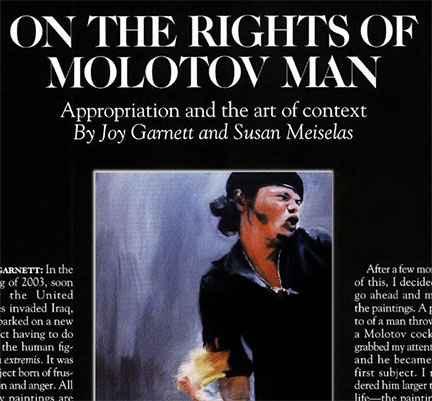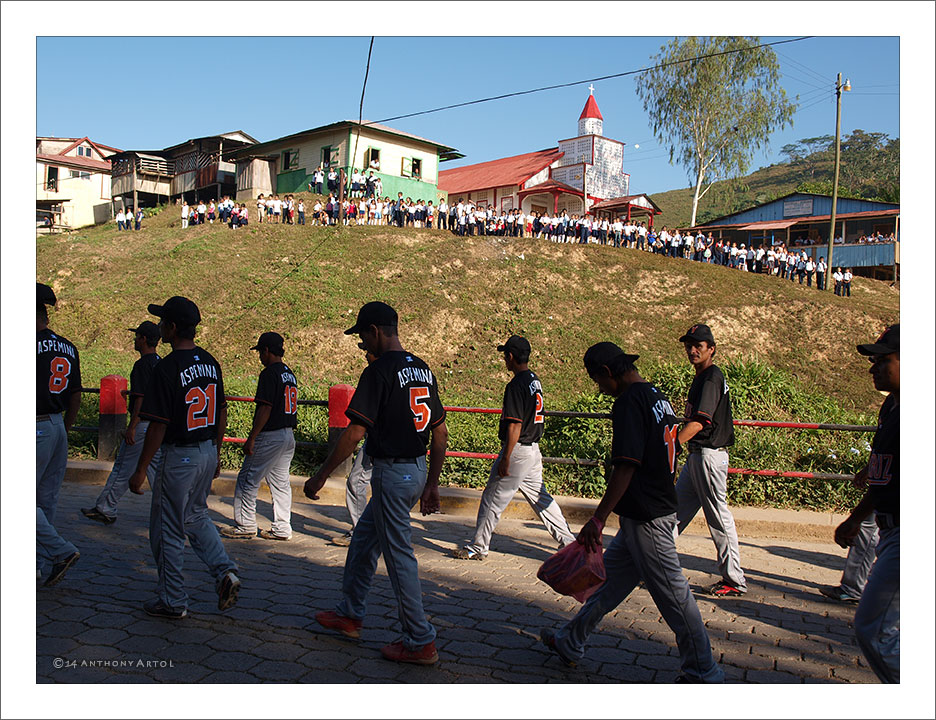|
|

While Susan Meiselas' photograph is trading formal imperfections for the authenticity of the moment, the Joy Garnett's shallow transformation is doing the opposite: she is trading the "here - and- now" for the sterile "universal" emotions.
Both efforts are worth each other however: they are attempting to create an "iconic image" useful for the machinery of the brainwashing propaganda grinding a piece work over and over..
The most miserable part of this story is coming not from a delusional two-thousand-dollar coupon popping out from nowhere, but from the absence of the very basic respects to the work of someone else.
Mere fifty years ago, the first thing, the artist would do , would be preserving and proudly acknowledging the roots of his own work. Otherwise the people around him would treat him as a primitive ignorant. There is no a trace of such worries in the Garnett's short story on collecting someone else's work in an anonymous desktop folder.
The fiction of pseudo-legal "protections" lately imposed upon our culture quickly destroyed that part of our mentality and replaced it by the calls to the lawyer's office.
Both efforts are worth each other however: they are attempting to create an "iconic image" useful for the machinery of the brainwashing propaganda grinding a piece work over and over..
The most miserable part of this story is coming not from a delusional two-thousand-dollar coupon popping out from nowhere, but from the absence of the very basic respects to the work of someone else.
Mere fifty years ago, the first thing, the artist would do , would be preserving and proudly acknowledging the roots of his own work. Otherwise the people around him would treat him as a primitive ignorant. There is no a trace of such worries in the Garnett's short story on collecting someone else's work in an anonymous desktop folder.
The fiction of pseudo-legal "protections" lately imposed upon our culture quickly destroyed that part of our mentality and replaced it by the calls to the lawyer's office.
 |
||
|
Town of Bonanza / RAAN: March 9, 2010 7:42 AM,
Exposure Time: 1/200 sec ; Exposure Bias: undisclosed |
||
| Today, the descendands of the Nicaraguan Revolution are wearing different uniforms and they are pitching different balls than the "iconic" Molotov-Man. The mining town of Bonanza was at the center of the saddest events in the Nicaraguan 1980's. |

